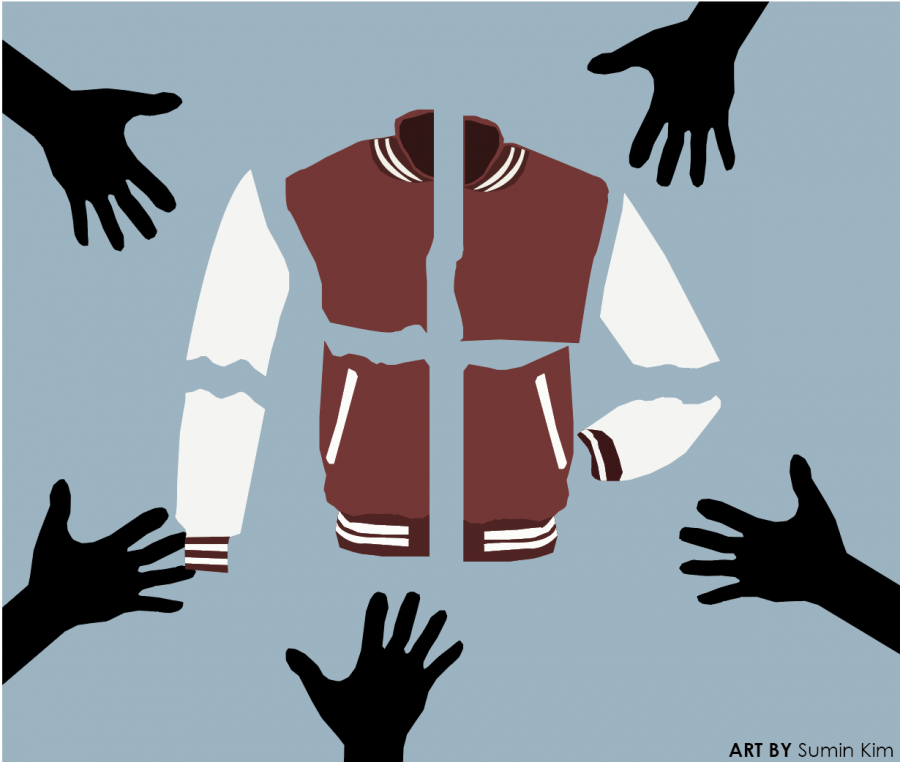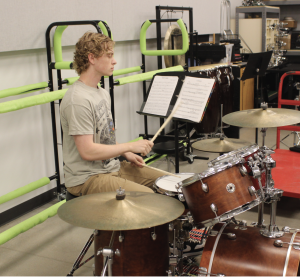Value of the well-known letterman jackets
Letterman jackets used to be exclusively for sports but has since been made common for the arts. The question is at what point does the inclusivity of the jacket make it meaningless.
December 30, 2019
The traditional letterman jacket was invented in the 1930s in an attempt to keep athletes warm with a thicker woolen material. Since then, schools have decided to allow many extracurricular activities including band, theatre, and debate to earn letterman jackets as well.
There is controversy among students as to whether or not students other than athletes should be allowed to receive a letterman for their extracurriculars. I think that students in other extracurricular should be allowed to earn letterman jackets like athletes in a sport, but the amount of jackets given out is high and should be reduced to the quality of the performance in a student.
In the early 1900s, varsity letterman jackets were only given to athletes in their junior or senior years, and recently, schools have given sophomore and freshman in sports jackets as a sign of their hard work as young student-athletes on varsity teams, and this expansion leads into the idea that students in other performing arts in extracurriculars should earn jackets as well.
Since letterman jackets usually have to be bought from the school, some schools give them out at ceremonies or banquets as awards to athletes in order to show that schools are making an effort to raise funds for athletes’ jackets. This supports the idea that schools are becoming more inclusive with the jackets going to even more students, but that they’re only given for their performance and therefore should be also continued with performing arts students.
On the sleeves of letterman jackets are patches that represent the sport or activity a student is in. When a student is awarded a jacket, usually in their sophomore year, the patches represent the extracurricular that they participate in. With this said, patches can represent not only sports, but fine arts including band, theatre, or debate. If a patch represents any extracurricular, it doesn’t matter if the activity is always physical, and students should be rewarded as such.
With students in fine art extracurriculars being awarded lettermans, it shouldn’t be a confusing or uncommon concept for people to grasp because of the quality of their performance in their sport or activity.
If letterman jackets were awarded based on performance instead of the actual extracurricular, I think less people would be upset about the activities that receive them because when a jacket is given to an athlete solely because of their stellar performance in the extracurricular they enjoy, it puts an emphasis on their character as a student athlete and will give them pride and confidence in the activity they participate in.
In the past, sports programs have rewarded letterman jackets to athletes based on their performance in their sport, and it is not just given to them for being on the team. This could also be a concept for performing arts lettermans to allow the highest of each activity to earn a jacket. This method would eliminate the opinions of people that are frustrated with the amount of people who walk around wearing letterman jackets. With that said, if people still argue that lettermans should only be for sports, they are oblivious to the hard work students put into their activities.
Overall, letterman jackets should continue to be given to students in sports as well as performing arts, but if the quantities are limited, and the jackets are only given to the students with the highest performance in their activity, it will give students drive to improve at what they do, and pride to the ones who earn them. This should also limit the debate among the activities that earn them, because if anyone spends time and is good at the extracurricular they love, they deserve a token representing their hard work in the form of a letterman jacket.










Ashley • Nov 13, 2021 at 7:11 pm
I completely agree